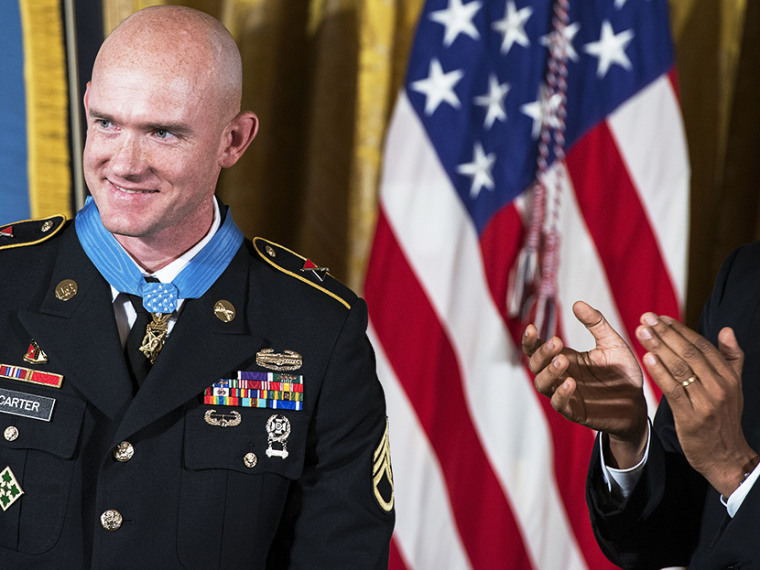At the White House on Monday, Army Staff Sergeant Ty Carter was decorated by President Obama with the Medal of Honor, the nation’s highest combat award. Now a member of the tiny group of 79 living recipients, he is only the fifth living recipient from all the American conflicts since the end of the war in Vietnam nearly forty years ago. This brings into sharp relief the infrequency with which the Medal of Honor has been bestowed in recent times, and perhaps more
Forty years ago, there were nearly 400 living recipients, including veterans of both World Wars, and there was even a living recipient from the Boxer Rebellion in 1900. Many---like Jimmy Doolittle, Eddie Rickenbacker, Audie Murphy, Douglas MacArthur, Pappy Boyington and Joe Foss---were household names. Because the nation had been involved in an existential fight in which every household had contributed, there was much interest in citing extraordinary service, and even ordinary people felt a kinship with those who had been recognized.
But much has changed since then. Our military service is now composed exclusively of volunteers, and there is a wide distance between those who are serving and those who are being served. Most people can marvel briefly at the exploits of our young men and women in uniform, but military service is now just an abstraction for Americans. And people who, in an earlier age, would have served as role models for American youth have been eclipsed by sports and entertainment figures engaged in enterprises that demonstrate little in the way of selflessness.
Many observe that these days there are far fewer Medals of Honor awarded than in previous wars, and the numbers surely support this observation. The decoration has become increasingly rare: most Medals of Honor were awarded during the Civil War, when it was the only decoration for battlefield gallantry, and there have been only about 800, many of them posthumously, since the beginning of World War II. But even in contrast to Korea and Vietnam, there has been a scarcity of Medals in our most recent wars. One explanation is that our tactics have changed the nature of combat. Although there are pitched battles---such as the attack on Combat Outpost Keating for which Carter was decorated---they are the exception. Indeed, the large majority of American casualties in Iraq and Afghanistan have been the result of improvised explosive devices, not of firefights. So, there just haven’t been very many opportunities for the heroics that brought recognition to Staff Sergeant Carter and the four other living Medal recipients from the past decade.
In addition, the decision to award the Medal of Honor---indeed to grant any valorous award---is a very subjective one, and it is impossible to create unambiguous criteria to make the selection any more objective. That is why Medal recipients will often say that on that day there were others who were every bit as brave, or braver still, but who were not recognized. Think about the requirement that the heroic action must be observed and reported by witnesses, and consider that many intrepid acts go unreported because they were not witnessed---or the witnesses themselves were killed in action. That is why recipients of the Medal of Honor often say that they don’t wear the award for themselves---they wear it for all those who can’t.
Service in armed combat is a life-altering experience in which all participants are at risk for maiming and violent death. But every combat soldier will dwell not on the fear and the risk but on the loss of comrades. The majority of Medals of Honor in the last hundred years, and particularly those to the recipients from Iraq and Afghanistan, have been for acts in which the recipients risked death to save others. Although it is almost impossible to grasp by those who have not served, there is something about the comradeship that is forged in the crucible of war that is tacitly understood by all those who have lived through it. We fight for the country, and we fight to accomplish the mission, but most of all we fight for each other.
